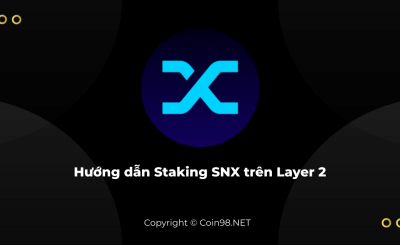Yield farming – a term that is no longer strange to brothers in the crypto world. However, in each DeFi field, we have separate pluses and minuses that sometimes users have to consider very carefully before deciding to choose the side to send liquidity.
Today, let’s join Techtipsnreview to become a Bancor (BNT) farmer to see what’s so special about this protocol!
How does Bancor (BNT) work?
Before going into how Bancor works, you can refer to an overview of Bancor here.
Liquidity mining
If you have used some AMMs like Uniswap or Sushiswap, then surely you are no stranger to liquidity mining. For those of you who don’t know, liquidity mining simply means that you are rewarded with the exchange’s governance token when you add and keep LPs on it, for example, Sushiswap’s SUSHI or Uniswap’s UNI.
The liquidity mining mechanism works similarly on Bancor (BNT). Launched in November 2020, users who add and hold LPs will be rewarded with Bancor’s BNT governance token. Any pool on Bancor can enjoy the liquidity mining mechanism, as long as the majority vote on the proposal. This is also a point showing the decentralization of Bancor.
Read more things to know about liquidity mining at: Liquidity Mining: User-centric token distribution strategy
Protect users from Impermanent loss (IL protection)
According to the editor’s opinion, this is the mechanism that will bring Bancor to new heights in the AMM village. You can read more about impermanent loss here.
Let’s take a simple example:
- A brings 100 USDC into LP for the purpose of farming BNT. Don’t be surprised why just using 1 token can still add LP. This is the special feature of BNT, single-sided liquidity.
- Bancor mint 100 BNT from the DAO and stake it with A’s 100 USDC (assuming 1 BNT = 1 USDC). This is the step that Bancor covers IL for you.
- After 3 months, A decided to withdraw LP. At this time, the price of BNT decreased by 10%, meaning an impermanent loss made A’s stake only 90 USDC when withdrawn.
- However, with the user protection mechanism, A can still withdraw 105 USDC, including 100 USDC capital plus 5 USDC from the transaction fee.
- Why does A not suffer a loss when withdrawing LP? It is because of the 100 BNT that Bancor minted from the DAO and put to stake with A’s 100 USDC before. After adding 10 VND from the price drop and 5 VND from the transaction fee, this 100 BNT has now become 115 BNT and was sold by Bancor to cover the IL of the yield farming farmers. It should be noted that in this 115 BNT, Bancor will only sell enough to cover the IL, the remaining tokens will be burned to ensure transparency.
This mechanism guarantees LP adders a safe and productive crop. However, here are some conditions to enjoy IL protection:
- Must be a whitelisted pool.
- For each day of holding LP, you will be protected 1%. Thus, to be protected 100% of value, you need to keep LP on Bancor for at least 100 days, a period that is not short in the Crypto market.
- For the first 30 days, you won’t be protected (although in theory you’ll still be protected by a cumulative 1% per day). On the 31st day of keeping LP, you will be covered by 30% of IL and accrued to the 100th day.
This is a trade-off that I think is acceptable for yield farmers who prefer sustainability. Keeping LP on Bancor for 3 months with a stable, low-risk passive income source is not bad at all.
Bonus Reward Multiplier (BRM) mechanism
Bancor’s BRM mechanism is a mechanism to increase BNT receipt for users who add LP, on the other hand, it also helps Bancor attract new liquidity providers as well as retain them on the protocol for the long term. A specific example will help you better understand BRM:
- A stakes 100 USDC in the USDC/BNT pool and in theory should receive 100 BNT per week for this stake.
- After 7 days, A gets 100 BNT. On the first day of week 2, A received an additional 25 BNT since BRM was set at 1.25x. After week 2, A’s total reward is 225.
- Continuing, on the first day of week 3, A received 75 more BNT since BRM was set at 1.5x. So how is this number 75 calculated? Theoretically, A will only receive 200 BNT reward after the 2nd week. With 1.5x BRM, A’s total receipt will reach 300 BNT with 100 BNT bonus according to the BRM mechanism. This 100 BNT will subtract last week’s bonus (25 BNT) to get this week’s bonus. It’s a bit confusing but that’s the mechanism of BRM.
- At the end of week 3, A has a total of 400 BNT (it would be 300 without BRM).
- And so on, at the beginning of week 4 BRM is set at 1.75x until the beginning of week 5, BRM is set at a maximum of 2x. According to calculations, on the first day of week 5, A’s total BNT reward is 800 BNT, twice the theoretical amount of BNT without BRM.
It looks complicated, but it’s really complicated, but it can be understood that the longer you keep LP on Bancor (in months), the more your BNT reward will increase, and it’s exponential. This is how Bancor keeps its LP providers.
BRM is calculated by pool and accumulated by pool: Each pool will have its own BRM level. If you add another 1000 USDC to an existing USDC add pool that is enjoying 2x BRM, you will continue to enjoy this 2x BRM without being reset.
Farm on Bancor
That’s the theory, let’s try to go through the practical steps of planting and reaping on Bancor.
Step 1: Connect wallet – Select LP
You will need a wallet with Ethereum Mainet to start farming on Bancor. See instructions on opening and using Metamask wallet here.
After creating a wallet and connecting with Bancor, you will choose a pool field depending on your preferences and acceptability of profit – risk.

Step 2: Buy tokens to put into stake
After you have chosen a field you like, you will need to buy tokens to start being a “farmer”. Since most of the LP pairs on Bancor are top coins, you will be able to easily buy them on major CEX exchanges like Binance, Coinbase or Kraken.
A small note is that Bancor runs on the ERC20 platform, so you will need to buy a little more ETH to pay gas fees.
Step 3: Farm
Let’s start farming! Here is a visual example of how to farm in USDC/BNT pairs:

As illustrated, staking USDC in the pool will yield 85.33% APY, while staking BNT will yield 83.56%. An 8.65% reward will be taken from the transaction fee.
After pressing the “+” sign in the right corner of the pool, Bancor will take you to the Single-sided liquidity pool interface, where you only need to stake one of the 2 tokens in the pool. Here, we will choose a staking pattern in USDC.

Accordingly, you can only stake a maximum of 6,907.7 USDC. This limit is calculated on the basis of the amount of BNT being staked in the pool.
After entering the number of tokens we want to stake, we just need to confirm the stake. On Bancor, you will bear 2 times gas fee, one wallet approval and one staking confirmation. This is also a plus point of Bancor when compared to 3 times the farming fee like in Uniswap and Sushiswap.
After completing the staking, go to the Protection section to see how your farming is doing:

Currently, on Bancor’s interface, there is no integrated display of BRM, so you will have to calculate it by hand, but Bancor’s devs have listened to users’ opinions about this and are rushing to add more for you in the process. farming program.
Tips
You can completely compound the reward you receive when you add LP on Bancor. Although it takes a bit of work, the results will probably not disappoint you.
To compound, we need to go to Bancor’s Protection interface, then press Stake in the Reward section. Bancor will take you to this interface:

You just need to continue to stake the amount of BNT reward you receive, as long as it is within the Space Available limit that Bancor has calculated.
Don’t ignore it because it bothers you, because as Einstein once said “Compound interest is the 8th wonder of the world” – this has never ceased to be true!
Epilogue
Thus, Techtipsnreview has gone through the outstanding features of Bancor farming as well as the simple steps to become a true yield farming farmer on this protocol. Hope you guys have gained an objective view and soon make a decision whether or not to become a yield farmer on Bancor.
The article has references to the original article here.
Source: Practice being a farmer Yield Farming on Bancor (BNT)
– TechtipsnReview





